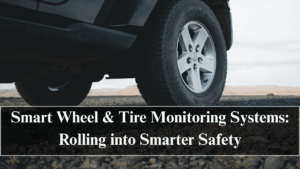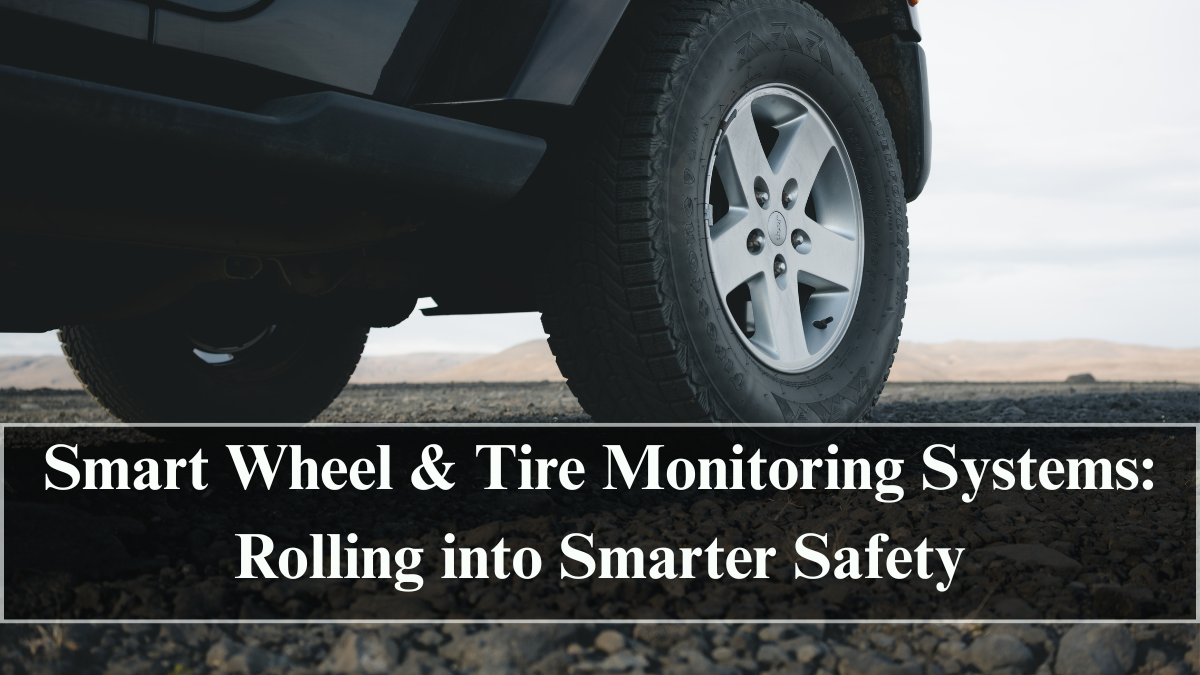By 2025, vehicle safety has evolved far beyond airbags and anti-lock braking systems. One of the most impactful innovations reshaping road safety and performance today is the rise of Smart Wheel & Tire Monitoring Systems. These advanced solutions combine IoT sensors, AI algorithms, and real-time analytics to transform how vehicles track and maintain tire health. From detecting pressure loss to predicting potential blowouts, these systems ensure vehicles remain stable, efficient, and connected at all times.
Traditional tire pressure monitoring systems (TPMS) have long been a basic safety requirement, but modern vehicles now rely on intelligent sensor ecosystems embedded within wheels and tires. These next-generation monitoring systems continuously measure temperature, pressure, tread depth, and overall tire condition, transmitting data to both the driver and the vehicle’s onboard computer. The result is a proactive safety model that prevents accidents before they occur and extends tire lifespan through predictive maintenance.

The Technology Behind Smart Tire Monitoring
At the heart of Smart Wheel & Tire Monitoring Systems 2025 are miniature IoT-enabled sensors integrated within tire walls and wheel hubs. These sensors continuously collect and transmit critical data about tire conditions in real time. Paired with AI-driven analytics, the data is processed to detect irregularities such as uneven wear, pressure fluctuations, and potential leaks.
Unlike earlier systems that relied on passive alerts, 2025’s intelligent monitoring tools provide dynamic feedback. They can adjust braking, suspension, and torque distribution automatically when abnormal conditions are detected. This integration with the vehicle’s control systems enhances stability and ensures that driving performance remains consistent across varying terrains and weather conditions.
Predictive Maintenance and AI Integration
One of the most powerful applications of smart tire technology is predictive maintenance. AI algorithms analyze historical and live data from the tire sensors to forecast when maintenance or replacement will be required. This eliminates guesswork for drivers and fleet operators, minimizing downtime and maximizing operational efficiency.
In commercial fleets, these predictive systems can save thousands of dollars annually by preventing tire-related breakdowns and optimizing replacement schedules. By combining cloud connectivity and machine learning models, manufacturers and logistics firms can now monitor entire fleets remotely, improving road safety while reducing maintenance costs.
Enhancing Vehicle Safety and Performance
Safety remains the core benefit of Smart Wheel & Tire Monitoring Systems 2025. A sudden drop in tire pressure can lead to loss of control, longer braking distances, or even blowouts. Smart monitoring detects such issues early, instantly alerting the driver and automatically reducing vehicle speed or torque distribution to maintain stability.
Additionally, real-time traction and surface data enable adaptive control systems to optimize performance. Electric and autonomous vehicles, in particular, benefit from this precision, as tire data directly influences energy consumption, battery range, and braking efficiency. With every rotation, tires now contribute to a car’s intelligence ecosystem.
Integration with Connected and Autonomous Vehicles
The expansion of connected vehicle networks in 2025 has amplified the importance of tire data. Information from smart wheel systems can now be shared across vehicle-to-infrastructure (V2I) and vehicle-to-vehicle (V2V) networks, alerting nearby cars and road systems about potential hazards like slippery roads or sharp debris.
For autonomous vehicles, tire data plays a critical role in decision-making algorithms. AI-driven control systems rely on real-time traction, grip, and friction data to adjust driving patterns, ensuring optimal safety without human input. Smart wheels have thus become a key enabler of self-driving mobility and predictive vehicle control.
Sustainability and Efficiency Gains
Beyond safety, smart tire systems contribute significantly to sustainability goals. By maintaining optimal tire pressure and alignment, vehicles consume less energy and emit fewer pollutants. In electric vehicles, even a small deviation in pressure can reduce driving range; smart systems prevent this by maintaining perfect balance and efficiency.
Manufacturers are also using tire data to develop eco-friendly materials and advanced tread designs that last longer and recycle more efficiently. Through AI insights, companies are reducing waste in tire production while promoting a circular economy for the automotive sector.
The Future of Tire Intelligence
As the industry moves toward full automation and digital connectivity, Smart Wheel & Tire Monitoring Systems 2025 will continue to evolve into fully autonomous self-regulating systems. Future tires will likely include self-healing polymers, adaptive air pressure control, and embedded chips capable of communicating directly with city infrastructure.
By 2030, every new vehicle—whether commercial, passenger, or autonomous—will feature real-time tire diagnostics as standard. The humble wheel has now become one of the smartest parts of a car, capable of enhancing performance, efficiency, and safety in ways once unimaginable.
FAQs
What are Smart Wheel & Tire Monitoring Systems?
They are advanced sensor-based systems that track tire pressure, temperature, and condition in real time to enhance vehicle safety and performance.
How do AI and IoT improve tire monitoring?
AI processes data from IoT sensors to predict tire wear, detect leaks, and alert drivers or fleet managers before failures occur.
Why are smart tire systems important for EVs?
They help maintain optimal energy efficiency, ensuring consistent range and performance by regulating tire conditions automatically.
Can smart tires communicate with other vehicles?
Yes, through connected vehicle networks, smart tires can share hazard information with nearby vehicles and infrastructure for improved road safety.
What is the future of tire technology?
Future tires will feature self-healing materials, adaptive air management, and integration with autonomous vehicle systems for complete predictive control.
Click here to know more.
